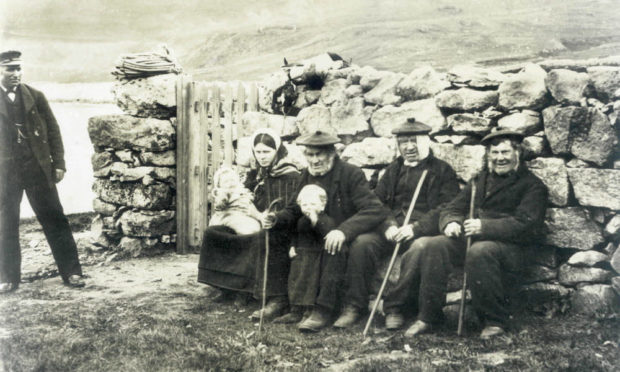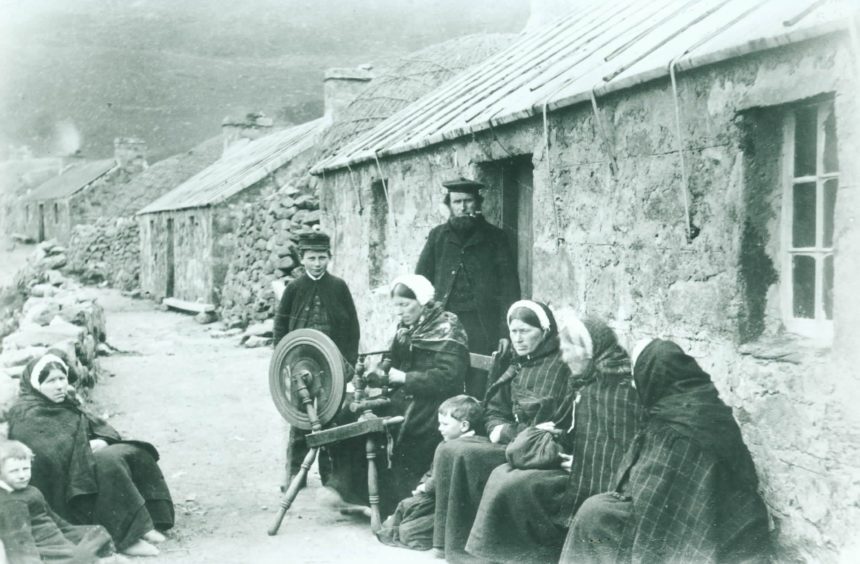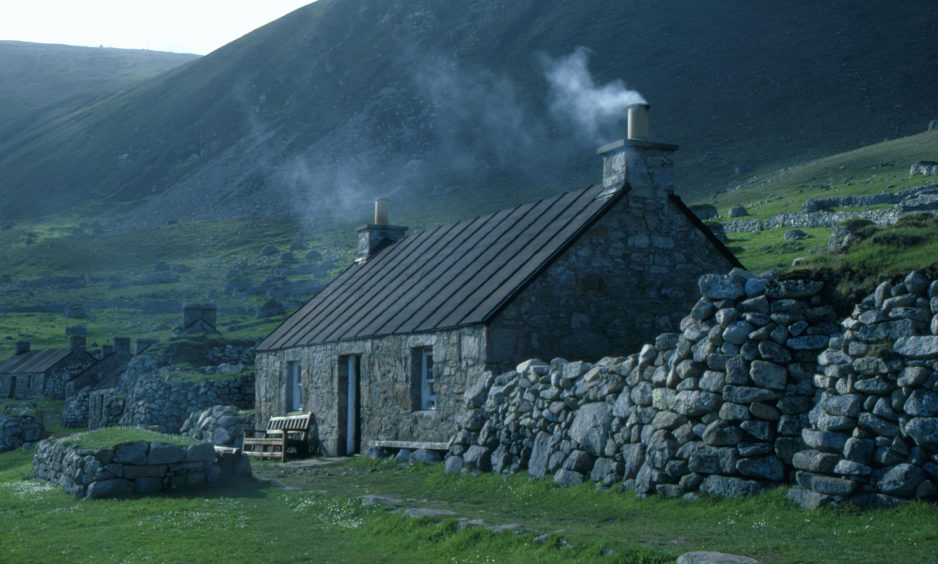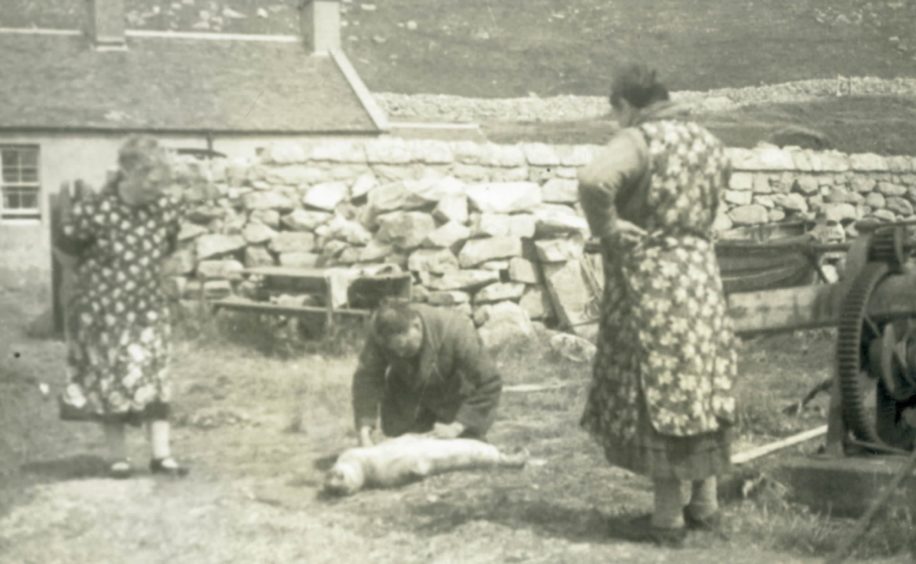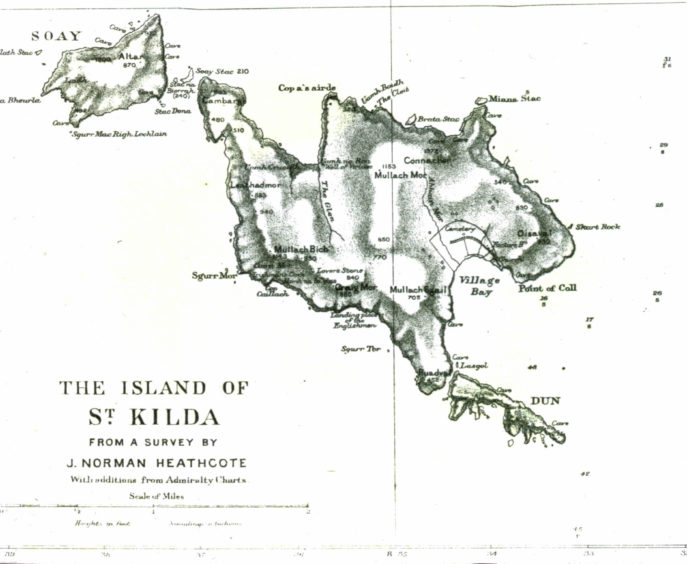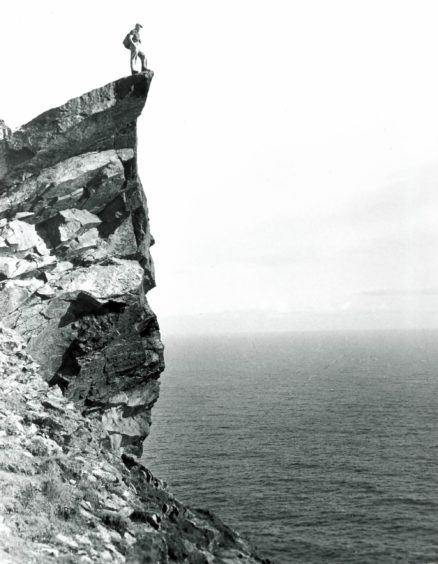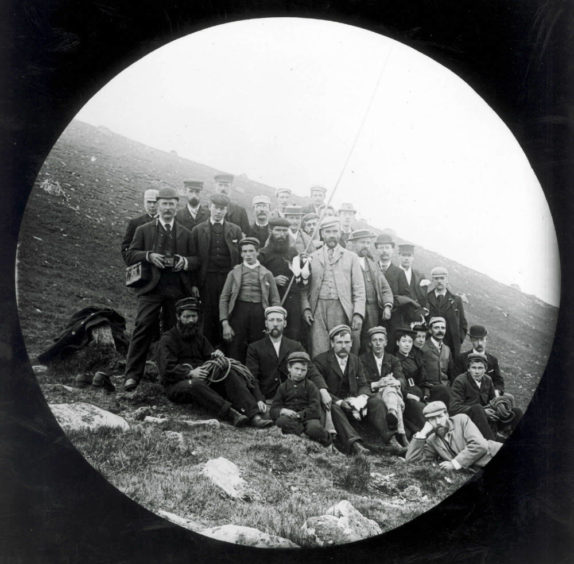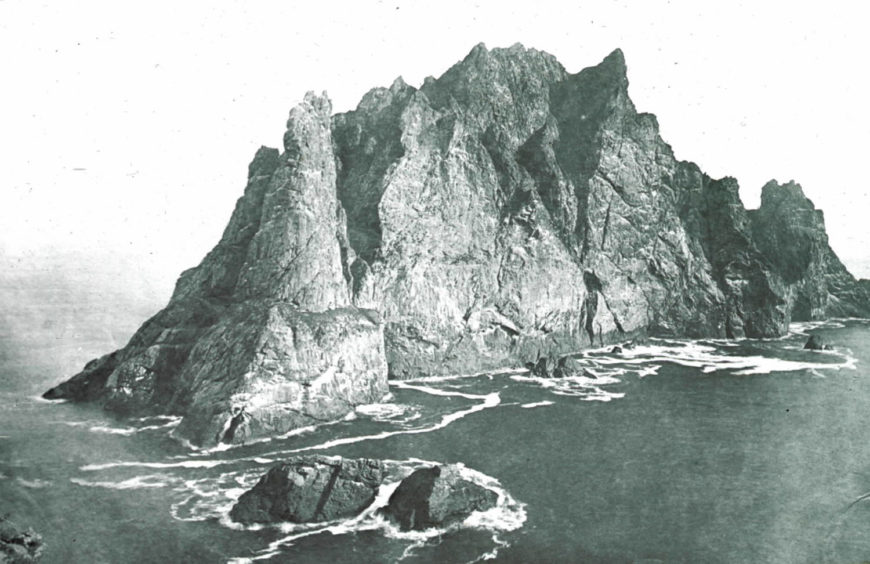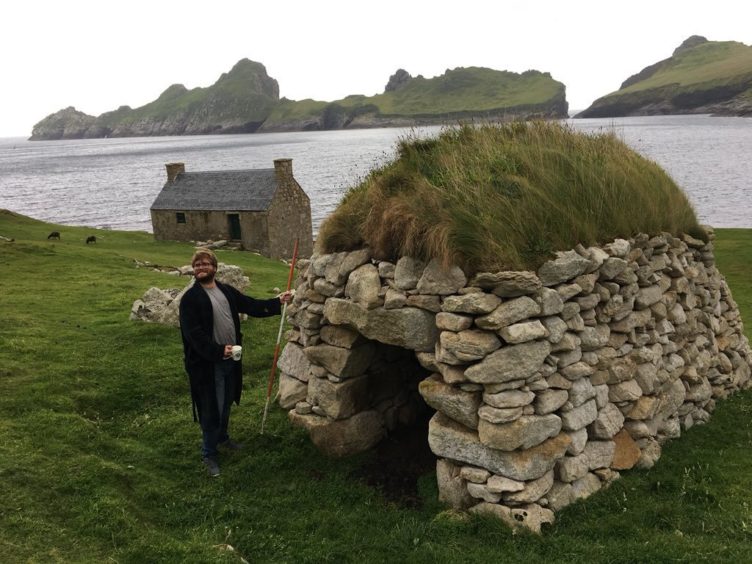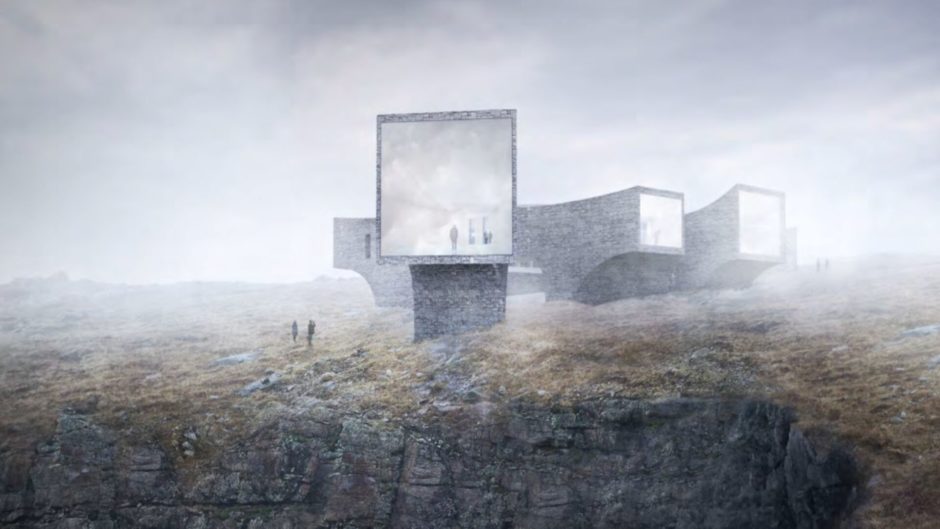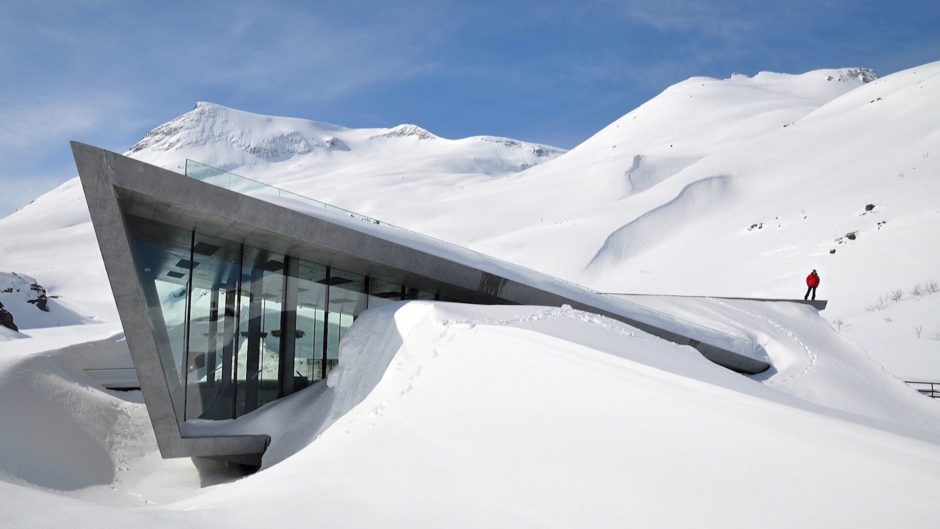The silence is the first thing that strikes you about St Kilda: the stillness around the dilapidated old buildings which once housed a thriving island community in the Western Isles.
This was the remote archipelago where generations of redoubtable men and women defied the elements, the spartan conditions and being detached from their neighbours in the Western Isles and the rest of Scotland with a fierce commitment to self-sufficiency and creating an environment which sustained life for 2,000 years.
The population was never more than 2,000 at any time in its history despite the constant threat of disease. In 1684, an outbreak of leprosy afflicted the residents, then in 1724, a “contagious distemper”, thought to have been smallpox, ravaged their numbers and only four adults survived out of 24 families.
Because there were no spades at his disposal, one of the survivors is reported to have dug 11 graves with the back board of a wool card, which was only 18 inches by nine inches in size. It must have taken him days of endless toil. Yet, although the epidemic killed 17 heads of 21 families and left 26 orphans, the St Kildans endured.
Eventually, though, as the population dwindled and the modern world impinged on their existence – whether in the influx of boatloads of tourists or the military personnel who began to regard St Kilda as an important strategic location – even the proudest residents began to accept they couldn’t continue their battle in the 20th century.
And so it was that the countdown began to them being evacuated from their homes and offered opportunities elsewhere in the summer of 1930.
Norman John Gillies was among those who was born in St Kilda and grew up at the furthest point of the Outer Hebrides.
It lies a matter of 110 miles off the west coast of Scotland and is a place which, even today with access to modern sailing vessels, is not for the faint-hearted or those who suffer from the merest semblance of mal de mer.
In 1930, Mr Gillies’ family were among the last 36 people evacuated from the island, bringing two millennia of habitation to an end.
But although St Kilda has now acquired a mystical reputation – and it is one of the few UNESCO World Heritage sites for both its natural heritage and its marine environment – there was nothing romantic about the decision which was taken by the residents themselves to leave their roots 90 years ago.
The loss of self-sufficiency began in the mid-19th century when there was increasing contact with the outside world. From 1877, the SS Dunara Castle made regular summer cruises to St Kilda, and was subsequently joined by others such as the SS Hebrides.
The famous Aberdeen photographer, George Washington Wilson, was among those who highlighted the old-fashioned way of life which still existed among the islanders.
And, as the 20th century arrived, the residents were introduced to new technological advances including cameras, automobiles, electric light and telecommunications.
John Ross, the schoolmaster, noted in 1889 that islanders spent time producing goods to sell to visitors, including sheepskins, tweeds, knitted gloves, stockings and scarves, eggs and ornithological items. But St Kilda was too remote to allow mass tourism, nor was there any reason to suppose it would have helped the indigenous population.
And while sons and daughters learned the old ways about how to catch birds and keep hunger at bay, there was a diminishing number to provide vital sustenance.
In 1912, for instance, the St Kildans suffered a number of acute food shortages and that was one of the catalysts for a serious outbreak of influenza the following year.
The Press and Journal reported: “The First World War brought a naval detachment to Hirta and regular deliveries of mail and food from naval supply vessels.
”When these services were withdrawn at the end of the war, feelings of isolation increased. There was more emigration of able-bodied young islanders and a breakdown of the island economy, which could not be stemmed by those who remained.”
St Kilda could ill afford to lose any able-bodied males. Already depleted by disease and emigration, by the 1920s the community was struggling to feed itself.
Nurse Williamina Barclay, who had been posted to Hirta, was horrified by what she found and as somebody who realised the limited medical service she could provide, she began her work to persuade the islanders the time had come to leave St Kilda.
The fateful meeting in 1930 was chronicled by Tom Steel, who had visited the island as a youngster, and wrote The Life and Death of St Kilda, which is widely regarded as the definitive book on this emotive subject.
He stated: “Frequently, she invited the women and children of the island to take tea with her, where she would listen to their problems and their hopes and do her best to offer advice. One day in April, she decided to extend the invitation to the men.
”She spent several days baking sufficient scones and cakes to feed over 30 St Kildans.
“When the day of the great tea party came, it was, she remembered: ‘A bit of a crush in my living room, but we all fitted in’.”
After everybody had eaten heartily, the nurse raised the question of evacuation.
“We had a chat about it and we discussed the conditions on the island,” she recalled.
“They asked me what I thought about it and I said: ‘Well, between you and me and the deep blue sea, I think you are on your last legs’.
She told them: ”Just you all have your tea and enjoy it and think over the fact that I could evacuate you quite easily and get you homes and see that you got jobs.
“I can do all that, but talk it over between yourselves.”
She was worried about all their futures, but the children in particular.
As she said later: “There were eight of them still of school age, some of them were under it, and I thought these little things wouldn’t have a chance in life if they stayed.”
It had already become clear that the majority of the islanders felt they could not continue life on St Kilda following the harsh winter of 1929-30.
The health of the islanders had long been a concern with the remoteness of the island brought into sharp view by the death of two women and a baby.
Mary Gillies, of 10 Main Street, who had been rushed to hospital in Glasgow, died of complications after giving birth to her daughter Annie, who also succumbed.
She was just 35. Then, shortly afterwards, another Mary Gillies perished at 14 Main Street from a form of tuberculosis, aged 22.
In these tragic circumstances, it was hardly surprising that on May 10 1930, 20 of the islanders petitioned the government for resettlement on the mainland, according to accounts held by the National Records of Scotland.
The departure of several men, whose tasks included tending sheep, weaving cloth and caring for the widows, meant ‘it would be impossible to stay another winter’.
The islanders added: “We do not ask to be settled together as a separate community, but in the meantime we would collectively be very grateful of assistance, and transference where there would be a better opportunity of securing our livelihood.”
The petition was also signed by Dugald Munro, the missionary and schoolteacher, and Nurse Barclay, who had been instrumental in organising it.
Yet while their efforts to secure the St Kildans’ future was based on humane reasons and in the residents’ best interests, the actual evacuation only took place after months of governmental discussions and anxieties expressed by some politicians and civil servants about the cost it would incur on the public purse.
Even the charitable societies could not bring themselves to be generous. The clerk of the Highlands and Islands Fund, as late as July 30, was still questioning the advisability of coming to the aid of the islanders.
The debate dragged on and the correspondence between the different parties reveals a penny-pinching approach to dealing with the issue.
But finally, almost a month later, the St Kildans engaged on their long goodbye.
There were few signs of sentiment on the morning of August 29, as people of different generations prepared for a seismic change in their lives.
Soon enough, all the houses were locked up and the properties left behind as HMS Harebell collected 13 men, 10 women and 13 children from Hirta, the largest island in the archipelago.
By 8am, everybody was safely on board the ship as it sailed away from the residents’ long-time home which rapidly became a blur on the horizon.
Lieutenant-Commander Pomfret recalled the mood of the islanders in an account, which was later published by the St Kilda Club, and said: “Contrary to expectations, they had been very cheerful throughout, though they were obviously very tired.”
However, another account related how the residents looked back from their ship towards Hirta and described their abandoned home as being like “an open grave”.
The crossing from Village Bay took 12 hours with 28 residents coming ashore at Lochaline, in the Morvern peninsula, while others headed for Oban and on to Inverness, Portree and Stromeferry.
For these St Kilda residents, the months ahead offered many revelations – such as seeing a tree for the first time, catching sight of an automobile and listening to the radio.
Many of the men went on to work in forestry with islanders impressing their new employers with their semaphore abilities and climbing skills.
On St Kilda, landowner Sir Reginald MacLeod received requests from people who wanted to move to the islands, but he declined.
He knew its time had come and gone and there was no possibility of continuing with a 19th century existence as the rest of the world grew accustomed to mod cons.
In the end, it was the right decision for everybody.
A trip to St Kilda should be on everyone’s bucket list
Today, St Kilda is home to a small Ministry of Defence base and staff from the National Trust for Scotland, which owns the island, and various visiting study and work groups.
Tourists with a desire to experience the archipelago at close quarters can do so through a variety of companies such as Kilda Cruises and Go to St Kilda which allow the public to spend up to four or five hours on the island, while providing fabulous views of the spectacular stacks and their extensive bird colonies.
I made the journey in 2012 and although the three-hour crossing was bumpy, it was merely the prelude to a wonderful, unforgettable trip back to the past and the chance to examine the tiny properties in which so many generations of islanders endured.
These crossings have to be booked in advance – and they are not currently available due to the Covid-19 restrictions – but it’s hoped that normal service can return in 2021.
Speaking personally, I think it should be on everybody’s bucket list.
Craig Stanford has never forgotten the thrill he derived from working as an archaeologist on one of Scotland’s most remote places for the last three years.
And even though he has now finished his role with the National Trust for Scotland, he still marvels at the myriad sights and communion with nature he witnessed on St Kilda.
The 28-year-old has been involved in numerous excavations and delved into the islands’ past, including how humans survived there for centuries, and witnessed the remarkable natural wildlife which is prevalent in the Outer Hebrides.
Mr Stanford took up the post at the start of 2017, having previously studied at Aberdeen University, doing an MLitt in Glasgow, and working with a group of professional archaeologists in south-west Scotland.
He said: “It is a legendary place for archaeology, an incredibly well-preserved historic landscape. Everywhere you look, you see evidence of a lost way of life.
“It is still very much a Hebridean island though, and the commonalities that it had with neighbouring islands is just as fascinating as the differences.
“My role was really to preserve, protect and promote the cultural heritage of St Kilda, which is one of Scotland’s Six World Heritage Sites.
“A lot of people see it as a sad place, focusing on the story of the evacuation in 1930, but all I see is the incredible vibrancy of thousands of years of human success in an awe-inspiring place. And that human story continues!”
Visitor centre vision revealed
Stunning images have been revealed, which highlight the efforts of a community in the far north of Scotland to build a world-class centre to celebrate the history of St Kilda.
The preferred site in Uig, on the Isle of Lewis, features a dramatic design for the base which will focus on the remarkable history of the UNESCO World Heritage site.
In 2009, four public bodies and the National Trust for Scotland promoted a competition to create and locate a heritage centre in the Hebrides that would celebrate the human and natural environment of St Kilda.
The final decision was unanimous to move ahead with the project at Uig, on a cliff edge where an abandoned radar station once kept an eye on the Western approaches.
When the capital funding required proved not to be forthcoming, the arduous task of developing the venture was left to a local committee.
They have stuck to that task ever since.
Planning approval has been secured for the first phase – A Chiad Cheum – costed at around £2 million. If this is successful, further phases will follow.
Calum Angus Mackay, of Mast-Ard Studio, described the plans as “hugely ambitious”.
He added: “It has a total price tag in the region of £5.5 million, with a world-leading architect delivering a concept that will bring great opportunities to remote villages that have struggled with depopulation and a changing demographic.”
The new centre is being designed by multi-award-winning Norwegian architect, Reiulf Ramstad, who has a groundbreaking vision for the project.
He has designed numerous structures and buildings across Europe, including The Whale Visitor Centre and Trollstigen Visitor Centre in Norway.
Mr Ramstad draws from nature for the design and said he appreciates the unique qualities of St Kilda.
Since childhood, he has held a passion for maps, and his first visit to the Uig site in Lewis was, in his own words, “like entering dreamtime”.
His designs have taken inspiration from the archaeology of Celtic brochs.
As he said: “We proposed an interior space as a kind of lens, where the distant silhouette of St Kilda would project itself onto a large glass window.”
Work is continuing on the fundraising project.
